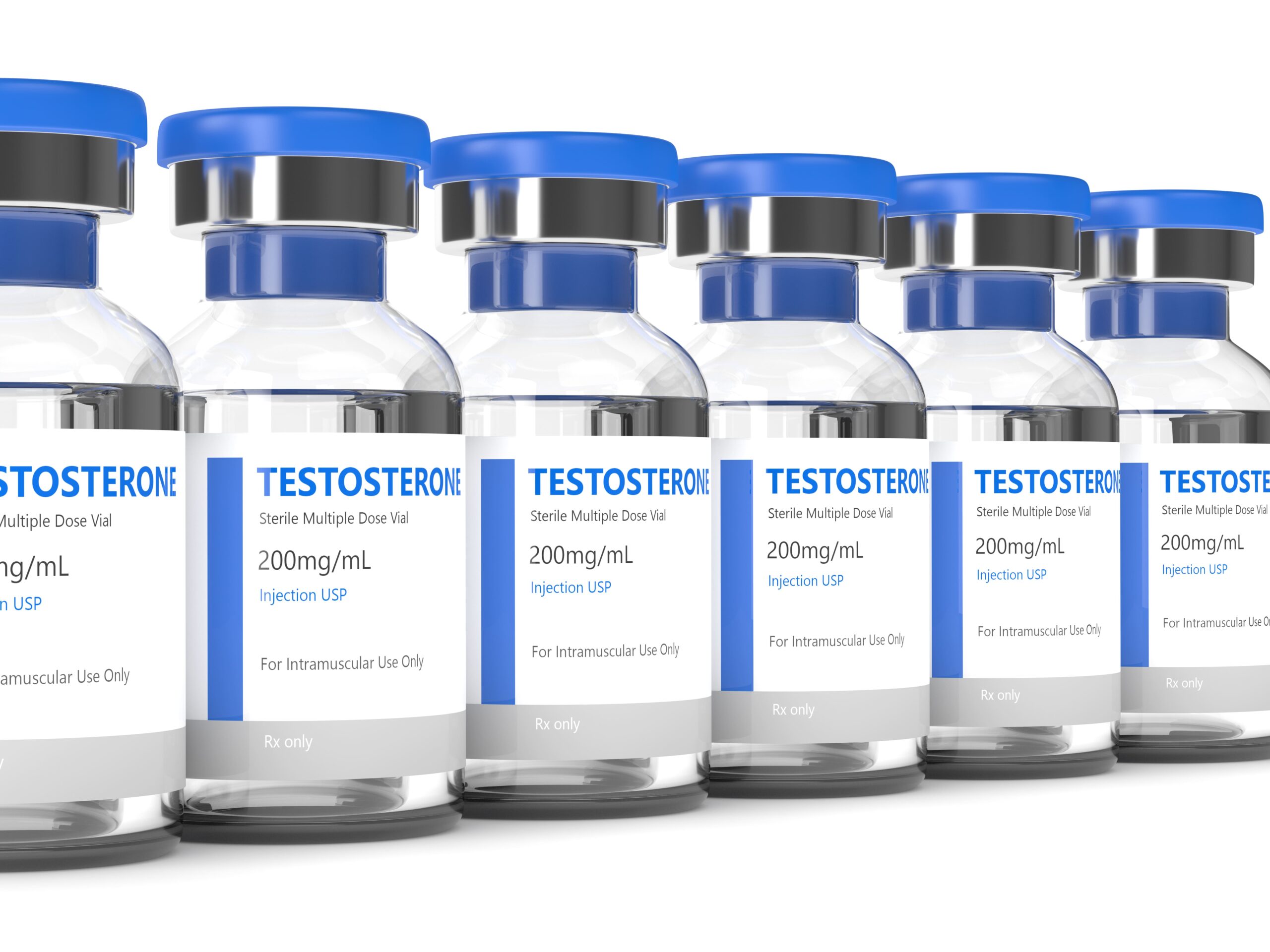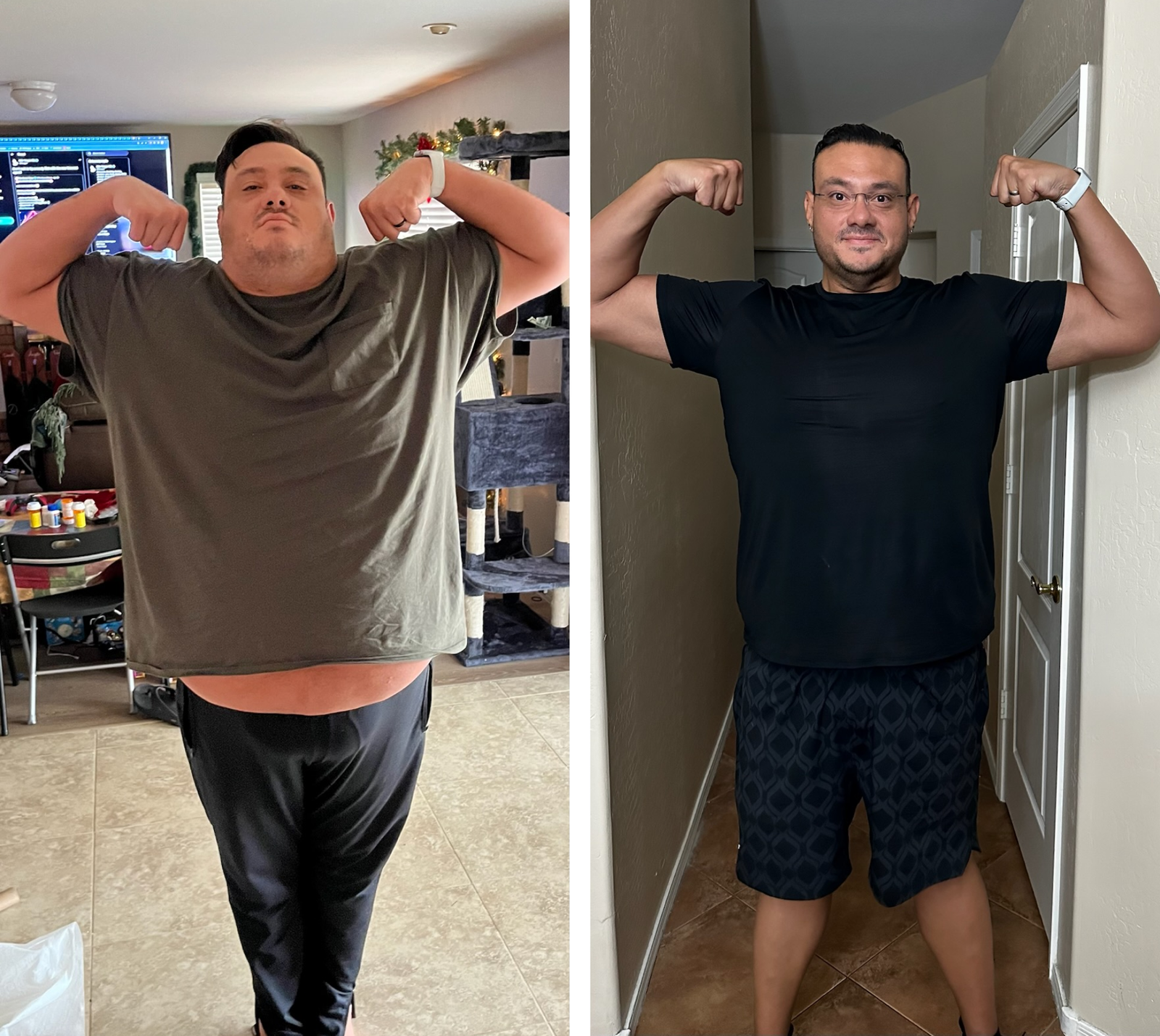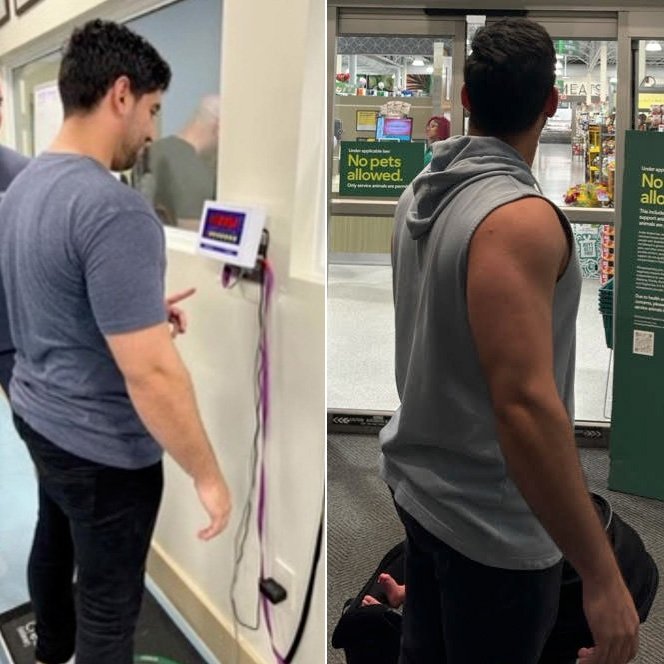For months, you’ve been experiencing various unexplained symptoms such as low sex drive, fatigue, sudden weight gain, joint inflammation, and other obvious complications that have made your life a less enjoyable experience. At first, you thought these issues were one-time occurrences or simply inevitable problems that came with age. However, as these symptoms persisted and began to worsen, you started to consider that there may be something wrong with your hormones. Naturally, instead of allowing these issues to continue, you’ve taken a proactive approach and have asked your physician to check your hormone levels for signs of deficiency. A few testosterone tests and several visits later, you’ve recently been diagnosed with low testosterone and recommended testosterone replacement therapy (TRT).
After discussing the pros and cons of several testosterone treatments, such as gels, patches, creams, and pellets–you and your physician have finally decided that using testosterone injections is the best way for you to receive a weekly scheduled dosage of testosterone to boost your T levels. To help make things easier and more convenient for you, the doctor has offered the option of self-administering your injections at home. Typically, this is a great option for someone like yourself who wishes to avoid driving to the clinic every week just to get a shot. Unfortunately, there’s only one problem: you’ve never had to use a needle a day in your life, so you’re not confident that you can administer a shot to yourself, much less do it properly.
But don’t worry; while self-injecting may initially seem intimidating, with proper guidance and practice, it can easily become a routine part of your TRT. Once you learn which sites you can use to administer the injection on your own and how to carry out the process properly, youll have no problem taking care of the scheduled injections yourself. Lucky for you, this article can provide an overview of how to self-inject testosterone safely and effectively and give you a blueprint of what to expect once you start administering your injections at home.
Where To Inject Testosterone
There are two ways to deliver testosterone into the bloodstream: subcutaneous or intramuscular injection. With subcutaneous shots, you inject your prescribed testosterone medication into the layer of fat between the skin and the muscle. On the other hand, intramuscular injections involve injecting testosterone directly into a muscle, allowing the body to absorb a larger volume of the medication much faster than with a subcutaneous injection.
Although subcutaneous injections are much easier to administer, your physician may recommend intramuscular injections since the method can supply you with more testosterone at a quicker rate. However, depending on where you choose to inject your prescribed medication, self-administering an intramuscular injection can become a lot more difficult, especially when you don’t know what to do.
Choosing your injection sites should be the first thing you do before you self-inject testosterone. In most cases, physicians find that the upper arm, the shoulder, and the buttocks are the best locations to administer an intramuscular injection. Just remember, once you start with one area, it is very important to rotate your injection sites to avoid irritation from repeated attempts in the same place. Knowing where to inject your testosterone and having a game plan regarding site rotation can make it easier to stick to a comfortable routine when administering at-home testosterone treatments.
In the Thigh
If you’re choosing to self-administer, the vastus lateralis in the thigh is a great place to inject a dosage of testosterone since it’s directly in your field of vision when youre sitting down.
First, take a look at your thigh and imagine it is divided horizontally into three equal parts. The upper third region (closer to your groin) is usually the best place to administer an injection.
Wipe that section with an alcohol pad and let it dry. Then pinch your skin and insert the needle at a 45 or 90-degree angle. Once the syringe is in, all you have to do is push the plunger to inject the medicine and slowly pull the needle out of your skin.
In the Buttocks
The gluteus maximus is another good area for a testosterone shot. To get started, visualize each buttock as separate sections divided into four parts and aim the syringe into the upper quarter of the butter near the hip bone to inject the testosterone.
Naturally, unless you’re incredibly flexible, this can be difficult to administer on your own, so in many cases, gluteal injections are typically best administered by your physician.
In the Arm
The deltoid muscle is the most commonly used site for vaccines and other types of injections, so it only makes sense that it would work for a testosterone injection. To locate the deltoid for an injection, find the triangular section of muscle where your arm meets your shoulder. The injection site should be in the center of the triangle, 1 to 2 inches below the bone at the top of your upper arm.
The deltoid is rarely used for T shots unless other larger sites are unavailable or difficult to self-administer. However, the deltoid can also be tough to use as an injection site, given the angle that you have to inject from, so it may be best handled by your physician.
Feeling Run-Down?
Take the Low-T Quiz Today
Our men’s clinic can restore your physiology, change your body composition and optimize your health to slow down aging and prevent health complications caused by low testosterone.
Take back your life and become a better you today!
How To Give Yourself Testosterone Injections: 7 Steps
Before starting your first injection, you must take the necessary precautions before administering your shot. Following these seven steps can help ensure you’re administering your injections safely and properly during the process:
Wash and Dry Hands
This is one of the essential first steps in the injection process. To ensure that you reduce the risk of infection, it is very important to thoroughly wash your hands with antibacterial soap and clean water before administering an injection.
Assemble a Sterile, Suitable Syringe and Needle
Now it’s time to assemble your equipment. When preparing your syringe, it is always important to use a fresh and unused sterile needle for each injection. Because testosterone has a thick and oily composition, you may need to use a thicker shot needle, such as 20 or 21 gauge, to draw up each dose.
Draw Up a Dose
To draw up a dose, you should begin by pulling air into the syringe and measuring the same amount as your prescribed dosage. Injecting air into the medication bottle helps to increase the internal air pressure, which makes it easier to draw the medicine into the syringe. This step is particularly crucial regarding testosterone since it has a high viscosity and can be challenging to withdraw from the bottle. After that, sanitize the top of the medication bottle using an alcohol wipe. Then, insert the needle through the bottle’s lid into the medication, and inject the air from the syringe into the container. To withdraw the exact amount of testosterone, you just need to invert the bottle and carefully draw the appropriate dosage into the syringe.
Check for Air Bubbles in the Syringe
Although pulling air into the syringe can help to make drawing each dose more efficient, injecting air bubbles into your body can cause an embolism. In this severe and sometimes even life-threatening medical condition, a blood clot or air bubble can travel from a syringe into the body and obstruct an artery or blood vessel, lowering your blood oxygen levels and, in some cases, even causing a cardiac arrest. Therefore, it is extremely important that you make sure that the syringe doesn’t contain any air bubbles when administering testosterone injection. One way you can accomplish this is by performing aspiration, a process that helps to draw back any fluids into the syringe so you can check for air bubbles. Here’s how it works: First, position the syringe in front of you with the needle exposed and facing upwards. Check for any air bubbles inside the syringe, and gently tap the side to make them rise to the top. Once you’re sure that it is free of air bubbles, gradually push the plunger to remove the air from the top of the syringe. Take a moment to make sure that you can only see a small droplet of medication emerge from the needle tip, and be cautious not to accidentally squirt a considerable amount of the dosage on the floor.
Prepare the Injection Site
Typically, testosterone injections are administered intramuscularly, meaning they are injected directly into a muscle. Usually, the deltoid, located in the upper arm, and the glute, situated in the upper back of the thigh, are the most common and readily accessible sites for intramuscular injections of testosterone.
Before administering the injection, use a sterile alcohol pad to sanitize the area around the intended injection site to eliminate skin bacteria and minimize the risk of infection. If you’re injecting into the glute, it is best to select a location in the top outer area of the glute. This means that you should choose an injection site either in the top left corner of the left glute or the top right corner of the right glute. These areas offer the best access to the muscle tissue, allowing you to avoid striking nerves and blood vessels in other parts of the glute.
Inject
Once you’re ready to administer the injection, hold the prepared syringe at a 90-degree angle above the sanitized injection site and swiftly insert the needle into the muscle. Before injecting the medication, gently pull back on the plunger. If you notice any blood entering the syringe, you may have struck a vein, so withdraw the needle and select a different location. As you apply the injection, make sure to administer the medication at a measured, steady pace to allow the muscle time to absorb the medication gradually.
Care for the Injection Site Post-Injection
After you inject the testosterone, fully depress the plunger and gradually withdraw the needle. As you do this, use a sterile cotton swab to apply pressure around the injection site. This will prevent the needle from tugging on the skin, which could cause unnecessary pain. Check the needle entry point for any bleeding, and use a sterile cotton swab and/or Band-Aid if necessary. Once you’re done, discard the used needle and syringe in a proper sharps container for disposal.
After the injection, you can ice down the location to help reduce the redness, swelling, or discomfort you will inevitably experience at the injection site. However, If these sensations become excruciating, inform your physician immediately.
Stay in Contact With Your Physician While Self-injecting Testosterone
Even if you’re self-administering your testosterone shots to avoid making fewer trips to the doctor’s office, your physician will still need to monitor your vitals and check your health status to make sure that your body is responding to the medicine properly. They will perform regular blood and urine tests to make sure that your body isn’t having any adverse reactions to the medication. Remember to attend any scheduled follow-ups so that your physician can continue to track your progress and ensure that your self-administration is going smoothly and producing the desired results.

Common Mistakes While Injecting Testosterone
Without the guidance and care of an experienced healthcare professional, there are several mistakes that you can make while administering TRT at home. That said, it is important for you to follow your physician’s instructions regarding your medication and pay special attention to the previously mentioned steps to ensure that you administer your injections safely and effectively. To make sure the process goes smoothly, make sure that you avoid the following:
Taking the Wrong Dose
It is crucial to administer an appropriate dose for your body’s testosterone needs, as taking too much or too little can lead to various side effects. Taking excessively large doses of testosterone can lead to issues such as blurred vision, headaches, and sudden weakness in the limbs. Conversely, administering insufficient amounts of testosterone to the body will also not be enough to alleviate your low testosterone symptoms, allowing issues such as low sex drive, reduced muscle mass, and joint inflammation to persist.
Failure To Disinfect
Moving around throughout the day can cause dirt and bacteria to accumulate on the skin, so it is extremely important to swab and disinfect the injection site before administering testosterone shots in that location. Failure to do so can increase the risk of infection after injection and lead to more serious issues such as sepsis, gangrene, and tetanus.
Entry Into a Blood Vessel
It is crucial that you avoid striking a blood vessel during the injection. Damaging a blood vessel can lead to internal bleeding within the muscle chosen for injection. Breaking a blood vessel can cause blood clots to form, which can lead to life-threatening circumstances if a blood clot travels to the heart or lungs. If blood is visible in the syringe as you pull the plunger, immediately remove the needle and press down on the injection site to stop the bleeding before attempting to continue with the injection.
Possible Complications After Shots
Whether you choose to self-administer at home or find you’re more comfortable leaving your injections in the hands of an experienced healthcare professional, taking testosterone as a long-term treatment can lead to possible complications. Potential side effects that can occur as a result of taking testosterone can include the following:
- High blood pressure
- Increased risk for pulmonary embolism
- Life-threatening allergic reactions such as anaphylaxis
- Decreased sperm count and increased risk for infertility
- Several mood changes, such as irritability, restlessness, depression, or suicidal thoughts
- Tenderness in the stomach, nausea, and vomiting
- Adverse interactions with other medications
Make sure to notify your physician if you begin experiencing these issues so they can adjust the dosage or discontinue the medication immediately to help you avoid further complications.
Women that are pregnant or might become pregnant should also avoid contact with testosterone, as the medicine can harm the fetus and cause congenital disabilities. Notify your physician if your sexual partner is pregnant or if pregnancy occurs while youre taking testosterone so that they can determine the best course of action moving forward.
The best way to avoid these issues is to discuss any pre-existing conditions and medications you take with your physician before starting treatment so they can determine the best dosage level for your TRT treatment. Depending on your medical history, your physician will decide if TRT will work for you as a long-term treatment. If it turns out that youre not a viable candidate for testosterone treatment, your physician may recommend other alternatives to help you boost your testosterone.
At the Renew Vitality Testosterone Clinic, we offer safe and effective testosterone replacement therapy thoroughly customized to your body’s hormone requirements. Our staff of physicians provides testosterone treatments integrated with easy-to-manage wellness plans to help men treat their low testosterone, restore their physical function, and improve their overall health. If you believe that you are struggling with low testosterone symptoms, contact us at 1-866-995-2371 to schedule an appointment at any of our hormone replacement clinics in the United States to learn more about our treatment options.
























